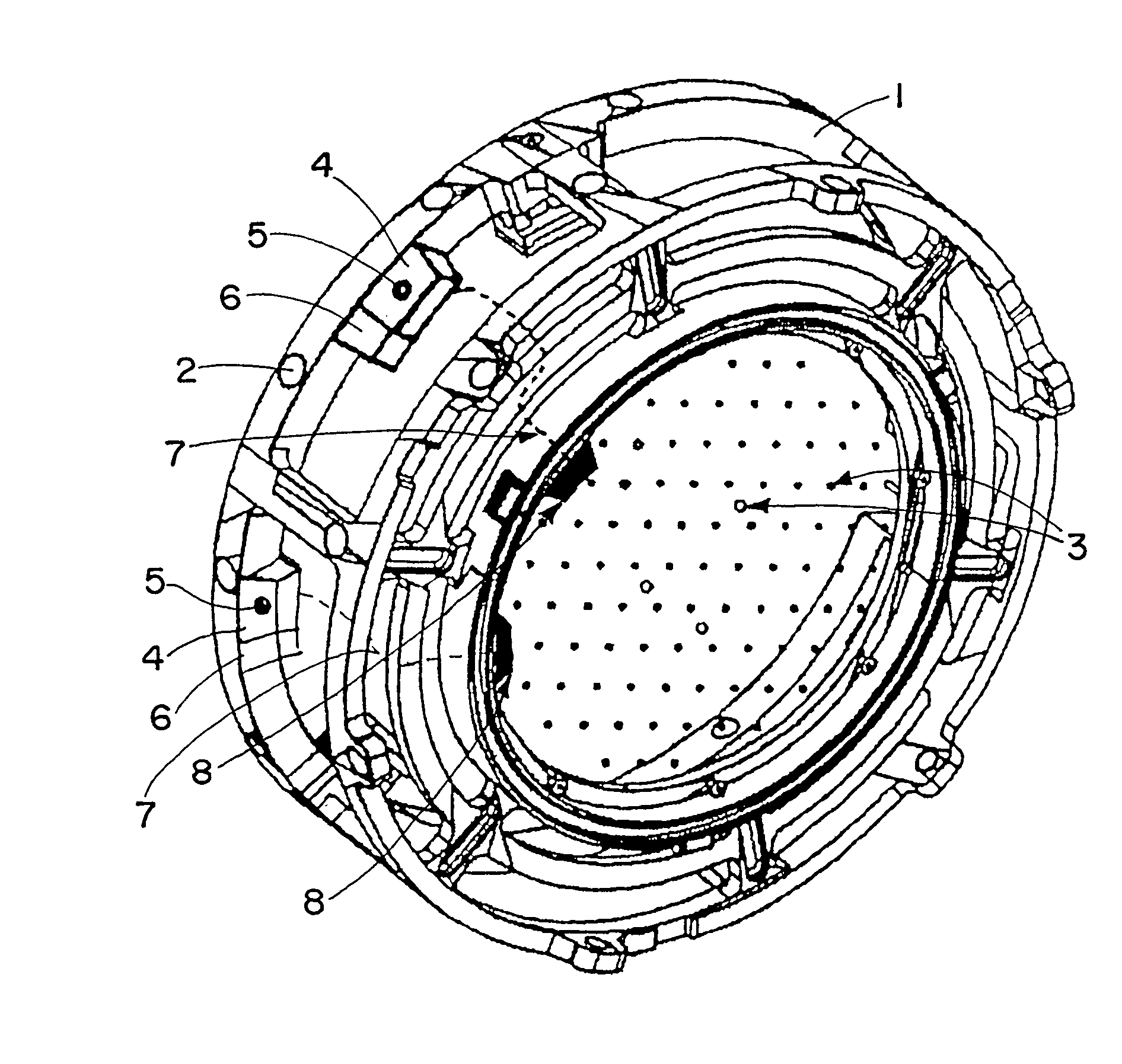[0005] A signal emitter includes an active light-emitting signal means, and an x-ray detector, which is operatively coupled to the signal emitter. The x-ray detector can detect the start and / or end of x-ray
radiation and provide the data to the signal emitter, wherein the signal emitter emits corresponding signals. In other words, the signal emitter emits an optical signal (e.g., active light emissions), which can be directly detected without
time lag, such that the presence of the x-ray
radiation can be reliably detected temporally.
[0008] In accordance with another aspect of the invention, a medical x-ray detection system can include an x-ray detection device such as described herein. The x-ray detection system also can include a
fluoroscopic image registration unit, wherein the x-ray detector and the signal emitter are arranged on the
fluoroscopic image registration unit. It is then possible to arrange the x-ray detector in the radiation transmission path of the
fluoroscopic image registration unit. The x-ray detector, for example, can be arranged at a point at which it can reliably detect the presence of x-ray radiation. The signal emitter can be advantageously arranged on the outside of the fluoroscopic
image registration unit, thereby enabling signal emissions to be easily detected by other externally mounted devices.
[0011] Further, a medical x-ray detection system can be provided that includes an x-ray detection device as described herein, as well as an optical medical
tracking system, such as an
infrared tracking system. The signal emitter can be arranged within the detection range of the
tracking system. This is advantageous as the optical signal emitter can be easily and directly incorporated into the tracking system environment. Since such
optical tracking systems are available or used in many navigation environments, the detection signal can be easily detected, processed and integrated into the sequence. Such a system (comprising a tracking system) can of course also comprise the features described herein for the medical x-ray detection system.
[0012] A method for x-ray detection includes detecting, via a detector unit, x-rays generated during treatment or treatment preparation. The information pertaining to the start and end of the radiation time can be relayed by an
active component that can be embedded within an array of passive markers. The integration of passive and active
light transmission is mutually supplemented here; both signals can be wirelessly transmitted and detected. While passive markers on a registration kit are perfectly sufficient for localizing such a kit, the active signal transmission for x-ray detection optimally supplements this
information transmission. It is thus possible to incorporate trigger signals for the start or end of radiation, for example into a known navigation environment based on reflection marker technology. Integrating one or more x-ray detectors into the fluoroscopic
image registration kit and supplementing the marker array of the kit with the signal emitter thus allows improved detection of newly acquired images, which incurs a high degree of reliability. Due to the control via this part of fluoroscopic
image acquisition, all x-ray tracking or navigation systems can benefit from greatly reduced tracking errors. This applies to C-arm x-ray systems using analog image transmission (video), since the approach does not exhibit the drawbacks of purely
software-based image comparison methods.
[0014] Specifically for C-arm
fluoroscopy apparatus having an
analog transmission mode, automatic signal detection may be quickly and easily implemented. When the x-ray radiation is detected, the information from the image comparison, for example, can be supplemented with the trigger signal of the signal emitter. The exact time for storing the tracking information then can be ascertained from the
coincidence criterion, in accordance with which both processes must take place at the same time, and within a very small time interval. A way of obtaining correct tracking information, which is more reliable in this way, also increases the safety and security of the patients.
 Login to View More
Login to View More  Login to View More
Login to View More 

